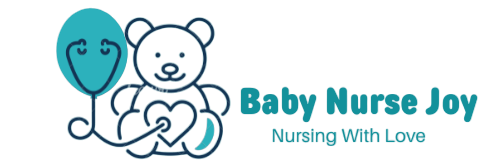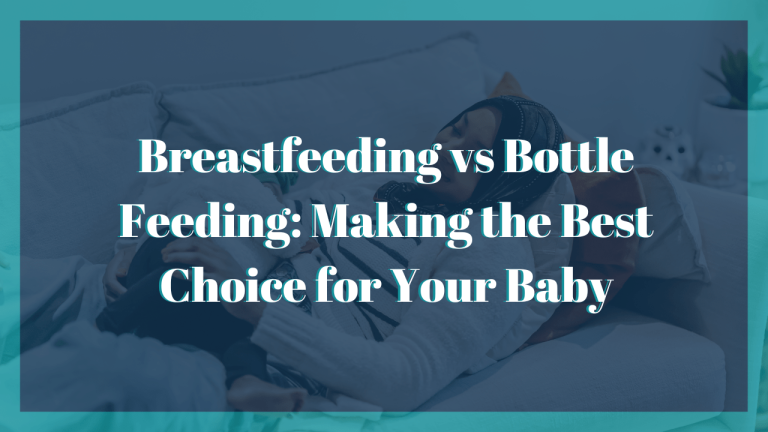Common Newborn Health Issues and How to Handle Them: A Parent’s Guide (2024)
Welcoming a newborn into your family is an exciting and life-changing experience! But as new parents, you’ll also face some newborn health issues that can be overwhelming if you’re unprepared. From jaundice to diaper rash and colic, newborns experience a range of common health issues that can cause stress for parents. Don’t worry—many of these are perfectly normal and easily manageable with the right knowledge. In this article, we’ll walk you through the most common newborn health concerns, explain why they occur, offer practical solutions, and guide you on when to consult a doctor. By the end of this guide, you’ll feel more confident in caring for your little one, even when the unexpected happens!
Understanding Jaundice in Newborns

Jaundice in newborns is a common health issue that affects many babies shortly after birth. It happens when there is a buildup of bilirubin, a yellow pigment produced during the normal breakdown of red blood cells. In newborns, the liver, which is responsible for processing bilirubin, may not be fully developed, leading to an accumulation of the substance in the blood. This causes the baby’s skin and the whites of their eyes to take on a yellowish tint—a key sign of jaundice.
What Causes Jaundice in Newborns?
Several factors contribute to the development of jaundice in babies. One of the most common causes is physiological jaundice, which occurs because the baby’s liver is still maturing and cannot yet efficiently process bilirubin. Premature babies are at a higher risk because their liver development is less advanced. Another cause of jaundice can be breastfeeding jaundice, which occurs if the baby is not getting enough breast milk to flush out bilirubin, often due to breastfeeding challenges in the first few days.
In more severe cases, jaundice may be related to blood incompatibility between the mother and baby, infections, or genetic conditions affecting red blood cell production. While most cases are mild, parents need to understand the underlying causes of jaundice and monitor their baby’s symptoms.
How to Recognize the Signs of Jaundice
The primary symptom of jaundice is a yellowish discoloration of the skin and eyes. This often begins on the baby’s face and may spread to the chest, belly, legs, and whites of the eyes. If you press lightly on your baby’s skin and it looks yellow, that is a good indication of jaundice. Jaundice is usually noticeable within the first few days after birth and may peak around the fourth or fifth day.
Other signs may include lethargy, difficulty feeding, or dark-colored urine. It’s important to monitor these symptoms closely, as untreated jaundice can lead to kernicterus, a rare but serious condition that can cause brain damage. Always consult your pediatrician if you notice any of these symptoms or if the yellowing worsens after the first week.
Home Treatments and Sunlight Exposure Tips
In mild cases, jaundice in newborns can often be managed at home. One effective method is sunlight exposure. Gently place your baby near a sunny window for short periods, as natural sunlight helps break down bilirubin in the skin. However, never place your baby in direct sunlight, as their skin is sensitive and can burn easily.
Ensuring your baby is feeding well is another crucial step in managing jaundice. Breastfeeding babies should nurse frequently, at least 8 to 12 times per day, to promote regular bowel movements that help eliminate bilirubin. Formula-fed babies should also be fed frequently to ensure they are getting enough nutrients to support liver function and bilirubin clearance.
When Jaundice Requires Medical Intervention
While most cases of newborn jaundice resolve on their own, some situations require medical treatment. If your baby’s jaundice seems severe or persists beyond two weeks, you should consult your pediatrician. Your doctor may perform a blood test to check the bilirubin levels in your baby’s system. High levels may require phototherapy, a treatment where the baby is placed under special blue lights that help break down bilirubin more efficiently.
In rare cases, more intensive treatment like an exchange transfusion, where the baby’s blood is replaced with fresh blood to quickly reduce bilirubin levels, may be needed. This is typically only necessary for severe cases of jaundice that are not responding to other treatments.
Dealing with Diaper Rash: Prevention and Treatment

Diaper rash is one of the most common health issues that parents encounter during their baby’s first few months. It usually presents as red, irritated skin in the diaper area and can make your baby uncomfortable and fussy. Understanding the causes of diaper rash and how to prevent and treat it effectively can help you keep your baby’s skin healthy and smooth.
What Causes Diaper Rash in Babies?
There are several causes of diaper rash, but the most common culprit is prolonged exposure to moisture. A wet or soiled diaper that isn’t changed frequently enough can lead to skin irritation, as the skin becomes sensitive and breaks down due to constant contact with urine and stool. This creates an environment where bacteria or yeast can thrive, further aggravating the skin. Babies with sensitive skin are particularly prone to developing diaper rash, and certain diaper materials or wipes may worsen the irritation.
In some cases, the introduction of new foods or changes in a baby’s diet can alter the acidity of their stool, leading to more frequent or severe rashes. Antibiotics, whether given to the baby or through breastfeeding from a mother on antibiotics, can also disrupt the balance of healthy bacteria on the skin, making diaper rash more likely.
Types of Diaper Rashes and How to Identify Them
Diaper rash comes in various forms, each with different causes. Irritant diaper dermatitis is the most common type and results from wetness and friction. It appears as red, chapped skin, often with small bumps. Yeast infections, another common cause of diaper rash, often develop when irritant rashes are left untreated. Yeast thrives in warm, moist areas like the diaper region and appears as bright red patches, sometimes with raised edges and small satellite bumps around the affected area.
Another type is allergic contact dermatitis, caused by reactions to ingredients in diapers, wipes, or creams. This type of rash can spread to other areas that come into contact with the irritant and may cause the skin to blister or peel. Identifying the type of rash is key to choosing the right treatment and preventing it from worsening.
Best Practices for Preventing Diaper Rash
Preventing diaper rash begins with maintaining good diaper hygiene. The most effective way to avoid rashes is by changing your baby’s diaper frequently—ideally, as soon as it becomes wet or soiled. Keeping your baby’s skin dry and clean is critical, as moisture from urine and stool is the main cause of irritation. Consider using gentle, fragrance-free wipes or simply a soft cloth and water for diaper changes to avoid unnecessary exposure to chemicals.
Another key prevention method is to allow your baby’s skin to air out regularly. During diaper changes, try to leave the diaper off for a few minutes to let the skin breathe and dry fully. This will help prevent moisture buildup, which is a leading cause of irritation. Applying a diaper rash ointment or cream containing zinc oxide or petroleum jelly during each diaper change can create a barrier that protects the skin from moisture and irritation.
Effective Treatments for Diaper Rash
If your baby develops a diaper rash despite your best efforts, several effective treatments can help soothe and heal the irritated skin. One of the simplest treatments is using a thick layer of protective ointment, such as zinc oxide, which acts as a barrier against further moisture and irritants. Zinc oxide is a key ingredient in many diaper rash creams and helps to calm inflamed skin. You can also try using petroleum jelly as a protective layer to lock in moisture while keeping out irritants.
For more severe rashes, especially those caused by yeast infections, an antifungal cream may be necessary. Yeast infections are persistent, and typical diaper rash creams won’t be enough to resolve the problem. Your pediatrician can recommend a suitable antifungal cream if necessary.
Natural remedies, like applying a thin layer of coconut oil or breast milk to the affected area, can also offer relief. These remedies have gentle, soothing properties that help moisturize and calm the skin without the risk of harsh chemicals. Always ensure that any product used on your baby’s skin is safe and hypoallergenic.
When to Seek Medical Advice for Persistent Rash
Most cases of diaper rash clear up within a few days with proper care and treatment. However, if the rash persists or worsens despite home remedies, it may be time to seek medical advice. If the rash spreads to other parts of the body, appears infected (with blisters, pus, or open sores), or is accompanied by a fever, consult your pediatrician. These could be signs of a bacterial or fungal infection that requires prescription medication.
In rare cases, persistent diaper rash may indicate an underlying condition like infant eczema or an allergic reaction to something in your baby’s environment. Your doctor can help identify the cause and recommend specific treatments to resolve the issue.
Managing Newborn Colic: What You Need to Know
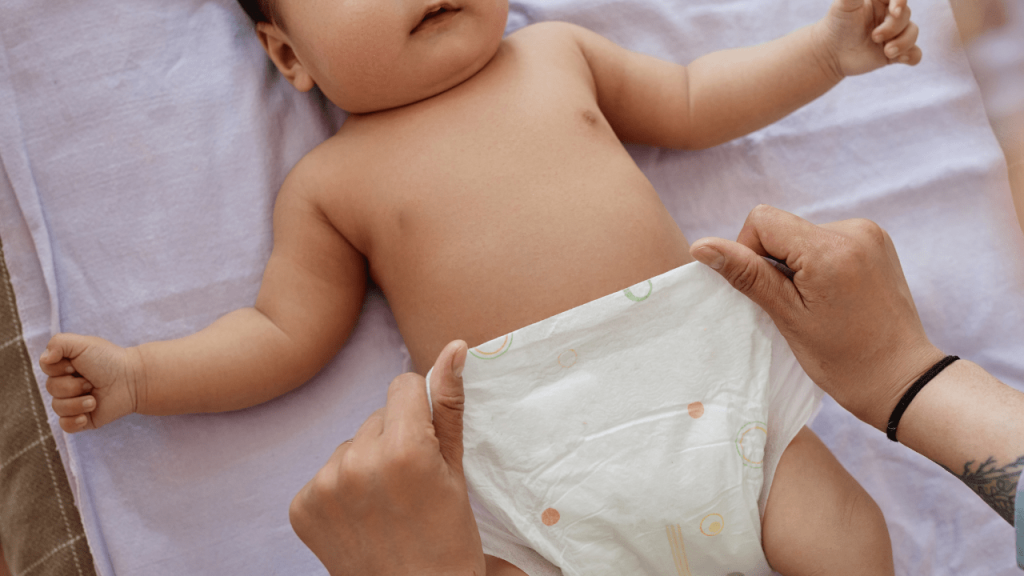
Colic is one of the most challenging and stressful newborn health issues that parents face. It’s characterized by excessive crying in an otherwise healthy baby, often lasting for hours at a time. Understanding what causes colic, how to identify it, and ways to soothe a colicky baby can help parents navigate this difficult phase with more confidence.
What Is Colic and Why It Happens
Newborn colic is defined as frequent, prolonged crying episodes that seem to happen for no apparent reason. The exact cause of colic remains unclear, but it’s believed to be linked to digestive issues, gas buildup, or an immature digestive system. Some experts suggest that colic may be related to a baby’s sensitivity to environmental stimuli, which can be overwhelming during the first few months of life. In other cases, colic might be due to food sensitivities, especially if the mother is breastfeeding and eating foods that cause gas or discomfort in the baby.
It’s important to note that colic is not a disease or a sign of poor health. Colicky babies are otherwise healthy and typically grow and develop normally. Colic usually begins when a baby is about two to three weeks old and peaks around six weeks, gradually improving by the time the baby is three to four months old.
How to Recognize the Symptoms of Colic
Recognizing the symptoms of colic in newborns can help distinguish it from normal crying. The key characteristic of colic is intense, inconsolable crying that lasts for at least three hours a day, three days a week, for three weeks or more. The crying often occurs in the late afternoon or evening and may be accompanied by other signs such as clenched fists, arched back, tensed abdominal muscles, and legs drawn up toward the stomach.
Unlike typical crying, colicky episodes can be difficult to soothe, and babies may seem to cry for no apparent reason, even after being fed, changed, or held. While all babies cry, colic is marked by a pattern of frequent and prolonged distress that can be highly stressful for parents.
Tips for Soothing a Colicky Baby
While colic can be frustrating, there are several strategies that parents can try to soothe their baby. One of the most effective techniques is to create a calming environment. Reducing noise and stimulation, dimming the lights, and swaddling your baby in a soft blanket can help provide comfort. White noise or gentle sounds like the hum of a fan or soft music may also help calm your baby.
Babywearing can also be a lifesaver for parents dealing with colic. Wearing your baby in a soft carrier keeps them close to your body, offering warmth and gentle motion, which can be soothing. Rocking, walking, or using a baby swing can also help distract and calm a colicky baby.
For babies who experience colic due to gas or digestive discomfort, burping them more frequently during feedings can help release trapped air. Some parents find that using anti-colic bottles or changing feeding positions reduces gas buildup. Additionally, trying gripe water or infant gas drops may provide some relief, though it’s important to consult your pediatrician before using any over-the-counter remedies.
Proven Methods to Reduce Colic Episodes
Although there’s no guaranteed cure for colic, there are methods that have been shown to reduce its frequency and intensity. One effective approach is ensuring that your baby’s feeding technique is optimized. For breastfeeding mothers, paying attention to your diet may help; avoiding foods that can cause gas, such as dairy, caffeine, and certain vegetables, might make a difference. If you’re formula-feeding, switching to a hypoallergenic formula could also help if food sensitivities are a suspected cause.
Another method is practicing tummy time during the day. While awake, placing your baby on their stomach for short periods helps strengthen their abdominal muscles, which can aid digestion and reduce gas. Additionally, regular, gentle massages on the baby’s belly can help relieve discomfort.
Research also suggests that probiotics, particularly those containing Lactobacillus reuteri, may help reduce colic symptoms in some infants. However, it’s essential to consult with your pediatrician before introducing probiotics into your baby’s routine.
When Colic May Require Further Medical Evaluation
Although colic is a temporary condition that typically resolves on its own, there are times when further medical evaluation is necessary. If your baby’s crying is accompanied by other concerning symptoms—such as vomiting, diarrhea, poor weight gain, or a fever—it’s important to consult your pediatrician. These symptoms could indicate another underlying issue, such as a gastrointestinal problem or infection, that needs to be addressed.
Colic can be emotionally exhausting for parents, especially when it seems that nothing is helping to soothe the baby. If you feel overwhelmed, don’t hesitate to reach out to your pediatrician or a support network for advice and reassurance. In some cases, talking to a healthcare provider can help rule out any other potential causes for the excessive crying, offering peace of mind that your baby is healthy despite the colicky episodes.
Understanding Infant Eczema: Causes and Solutions
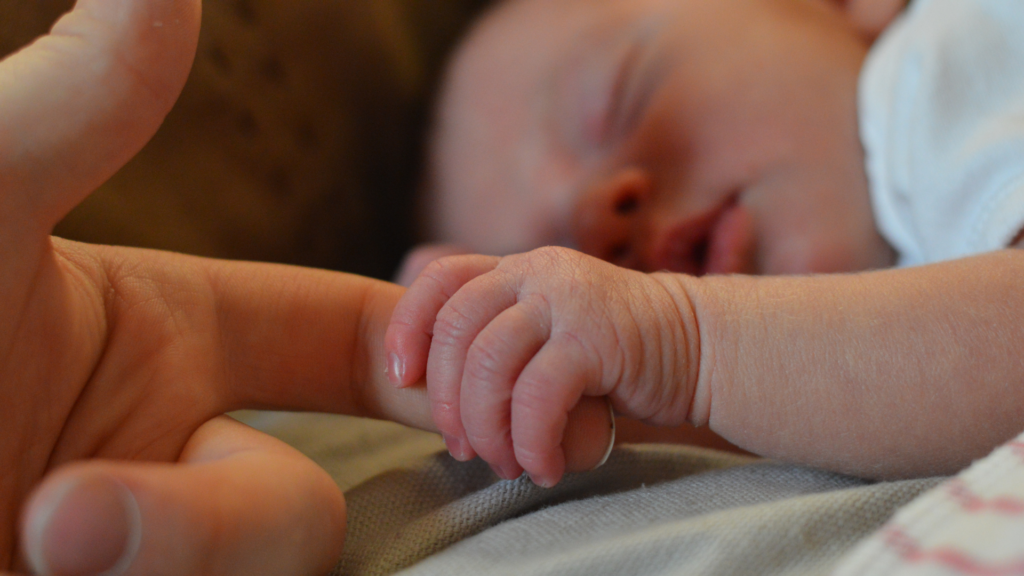
Infant eczema, also known as atopic dermatitis, is a common skin condition that affects many babies, typically appearing within the first few months of life. It’s characterized by red, dry, and itchy patches of skin, most commonly found on a baby’s face, scalp, and limbs. While eczema can be distressing for both babies and parents, understanding its causes and learning effective solutions can help manage the condition and prevent flare-ups.
What Causes Infant Eczema?
The exact cause of eczema in babies isn’t entirely clear, but it’s believed to result from a combination of genetic and environmental factors. Babies with a family history of allergies, asthma, or eczema are more likely to develop the condition. In these cases, the skin’s protective barrier may be weaker, allowing moisture to escape and irritants to penetrate, leading to inflammation.
Environmental factors also play a role in triggering eczema flare-ups. Common irritants include harsh soaps, detergents, or fragrances, which can dry out and irritate the baby’s sensitive skin. Additionally, exposure to allergens like pollen, pet dander, or even certain foods can exacerbate eczema symptoms. Changes in weather, particularly cold, dry air, or excessive heat and sweating, can further aggravate the condition.
Recognizing the Symptoms of Infant Eczema
Eczema typically appears as dry, red, and inflamed patches of skin, often causing intense itching. In babies, the rash commonly starts on the cheeks and scalp but can spread to other areas like the arms, legs, and behind the knees. Unlike other rashes, eczema is often chronic, meaning it comes and goes in cycles, with periods of flare-ups followed by calmer phases where the skin appears less irritated.
Parents should keep an eye on any signs of oozing or crusting, which can indicate that the eczema has become infected. If the skin appears swollen, warm to the touch, or if the baby develops a fever, it’s essential to consult a healthcare professional, as these may be signs of a secondary infection.
Best Practices for Managing Infant Eczema
While there is no cure for eczema, there are several ways to manage the condition and reduce the frequency and severity of flare-ups. The cornerstone of eczema care is keeping the baby’s skin moisturized. Regularly applying an emollient or fragrance-free moisturizer helps restore the skin’s natural barrier, locking in moisture and preventing dryness. It’s important to use a thick, creamy ointment or cream, as lotions may contain alcohol or other drying agents that can further irritate the skin.
Bathing your baby in lukewarm water, rather than hot, is another key strategy. Short baths, around 10 minutes, using gentle, soap-free cleansers can help cleanse the skin without stripping away natural oils. After bathing, it’s essential to apply a moisturizer while the skin is still damp to lock in moisture and prevent dryness.
Dressing your baby in soft, breathable fabrics like cotton can help prevent irritation. Avoid clothing made of wool or synthetic fibers, which can be scratchy and trap heat, exacerbating eczema symptoms. Additionally, keeping your baby’s nails trimmed or using mittens can prevent them from scratching their skin, which can worsen the condition.
Effective Treatments for Eczema Flare-ups
When eczema flare-ups do occur, treating them promptly can help soothe the skin and reduce discomfort. Over-the-counter creams containing hydrocortisone are commonly recommended for mild to moderate flare-ups. These creams help reduce inflammation and itching, but they should only be used under the guidance of a healthcare provider, especially in infants.
For more severe cases, a pediatrician may prescribe stronger topical steroids or other medications like calcineurin inhibitors, which reduce immune system activity in the skin. These treatments are often used when eczema is resistant to over-the-counter remedies or affects large areas of the body.
In addition to medications, wet wrap therapy can be highly effective for managing severe flare-ups. This involves applying a layer of medication or moisturizer to the skin, followed by damp bandages or clothing to enhance absorption and provide soothing relief. Wet wraps are typically used at bedtime and can significantly improve the skin’s condition overnight.
Identifying and Avoiding Eczema Triggers
Identifying triggers that cause eczema flare-ups is crucial for managing the condition long-term. Keeping a journal to track when flare-ups occur can help parents pinpoint environmental or dietary factors that may be contributing to the rash. For some babies, certain foods like dairy, eggs, or soy may trigger eczema, particularly if there is a family history of food allergies. If you suspect food allergies are playing a role, consult with your pediatrician, who may recommend an elimination diet or refer you to an allergist for testing.
Environmental triggers like dust, pet dander, or pollen should also be minimized. Regularly vacuuming, using a humidifier, and keeping the baby’s living environment clean can help reduce exposure to allergens. It’s also helpful to switch to hypoallergenic laundry detergents and skin-care products that are free from dyes, fragrances, and harsh chemicals.
When to Seek Professional Advice
While most cases of infant eczema can be managed at home with proper care and treatment, some situations require medical advice. If the eczema is not responding to over-the-counter treatments, or if it seems to be getting worse, it’s important to consult with a healthcare provider. Infected eczema, characterized by oozing, crusting, or swelling, requires prompt medical attention, as it may need antibiotics or other treatments.
If your baby has persistent or severe eczema, your doctor may refer you to a dermatologist for specialized care. In some cases, allergy testing may be recommended to determine whether certain foods or environmental factors are triggering flare-ups.
Newborn Constipation: Signs, Causes, and Relief

Newborn constipation can be a source of concern for parents, especially when their baby seems to be straining or uncomfortable during bowel movements. Understanding the signs, causes, and appropriate relief methods for newborn constipation is key to ensuring your baby stays healthy and comfortable. Unlike adults, constipation in babies doesn’t necessarily mean infrequent bowel movements; rather, it’s more about the consistency of the stool and the difficulty the baby experiences while passing it.
Recognizing the Signs of Newborn Constipation
The signs of constipation in newborns can vary, but the most common indicator is dry, hard stools that are difficult to pass. In a baby, this may be seen as infrequent bowel movements, excessive straining, or crying during bowel movements. A constipated baby might also have a bloated or firm abdomen, and they may arch their back or tense their legs as they try to relieve discomfort.
Another sign is small, pellet-like stools, which are a clear indication that your baby is having difficulty passing waste. It’s important to note that breastfed babies, in particular, can go several days without having a bowel movement, which is normal and not necessarily a sign of constipation. The key to determining constipation lies in the stool’s consistency rather than frequency.
Common Causes of Newborn Constipation
Several factors can contribute to constipation in babies, ranging from dietary changes to underlying medical conditions. One of the most common causes is formula feeding. Formula-fed babies are more likely to experience constipation than breastfed babies because formula is harder to digest and can result in firmer stools. If your baby has recently switched from breast milk to formula, or if there has been a change in the formula type, this could lead to temporary constipation.
Another cause of constipation in newborns is dehydration. If your baby isn’t getting enough fluids, their stools can become dry and hard, making them more difficult to pass. This is more common in babies who are transitioning to solid foods or in cases where the baby is not getting enough milk.
For babies who are starting on solid foods, the introduction of low-fiber foods such as rice cereal or bananas can also cause constipation. In these cases, the baby’s digestive system may need some time to adjust to the new textures and types of food, resulting in firmer stools.
In rare cases, underlying medical conditions, such as an underactive thyroid or a blockage in the intestines, can cause constipation. If constipation persists or is accompanied by symptoms like vomiting, extreme fussiness, or a refusal to eat, it’s important to seek medical advice.
Effective Ways to Relieve Newborn Constipation
If your baby is constipated, there are several gentle, effective ways to provide relief. One of the simplest remedies is to offer your baby a little extra fluid. If you’re breastfeeding, increasing the frequency of feeds can help, as breast milk is easily digestible and naturally helps prevent constipation. For formula-fed babies, offering a small amount of water between feeds—typically no more than one to two ounces for newborns—may help soften stools. However, it’s important to consult your pediatrician before introducing water to a baby’s diet, especially in the first few months of life.
Bicycle legs is a tried-and-true technique for helping a constipated baby. By gently moving your baby’s legs in a cycling motion, you can help stimulate their intestines and encourage a bowel movement. Similarly, giving your baby a gentle tummy massage in a clockwise direction can help relieve discomfort and promote bowel movements.
If your baby has started on solids, consider adding high-fiber foods like pureed prunes, pears, or peaches to their diet, as these fruits are known to soften stools. It’s important to introduce these foods gradually to avoid overwhelming your baby’s digestive system. Avoid giving low-fiber foods like rice cereal, bananas, and applesauce, as these can exacerbate constipation.
When to Seek Medical Advice
In most cases, newborn constipation can be managed with home remedies, but there are times when it’s necessary to consult a pediatrician. If your baby has been constipated for more than a few days, or if they show signs of extreme discomfort, such as crying inconsolably, refusing to feed, or vomiting, it’s important to seek medical help. Constipation can sometimes be a symptom of an underlying condition, such as Hirschsprung’s disease, which affects the baby’s intestines.
Additionally, if you notice any blood in your baby’s stool, this could indicate that they have small tears in the skin around the anus due to straining, or it may be a sign of a more serious issue. Your doctor can assess your baby’s symptoms and recommend further treatments, such as glycerin suppositories or specialized formulas for babies with persistent constipation.
Respiratory Issues in Newborns: What to Watch For
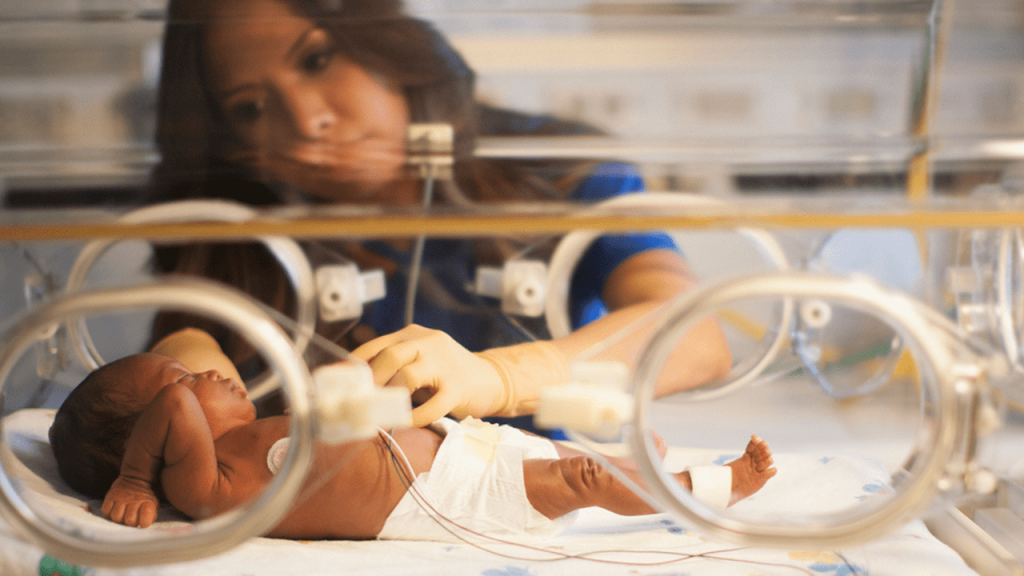
Newborns are particularly vulnerable to respiratory issues, given that their lungs and immune systems are still developing. While occasional sneezes or stuffy noses can be common in the early weeks, certain respiratory problems can be more serious and require prompt attention. Understanding the signs of respiratory distress and knowing when to seek medical help can make a significant difference in your baby’s health.
Recognizing the Signs of Respiratory Distress
One of the most critical aspects of monitoring a newborn’s health is recognizing the early signs of respiratory distress. Rapid or labored breathing, also known as tachypnea, is a primary indicator that something might be wrong. If your newborn is breathing faster than normal—generally more than 60 breaths per minute—it could be a sign of a problem. Along with rapid breathing, look out for other physical signs like flaring nostrils, grunting, or chest retractions, where the skin around the ribs or collarbone pulls in with each breath.
Another important symptom to watch for is cyanosis, a bluish tint to the baby’s skin, lips, or fingernails, indicating a lack of oxygen in the blood. This is a serious sign that requires immediate medical attention. Additionally, if your baby is persistently coughing, wheezing, or has difficulty feeding due to trouble breathing, these could also point to a respiratory issue that needs to be addressed.
Common Respiratory Issues in Newborns
Several respiratory conditions are common in newborns, particularly in premature babies or those born with certain risk factors. Transient tachypnea of the newborn (TTN) is one of the most frequent causes of rapid breathing in the first few days of life. It occurs when a baby’s lungs retain extra fluid after birth, making it difficult for them to breathe properly. TTN typically resolves on its own within 48 to 72 hours but may require close monitoring in the hospital.
Another common condition is respiratory distress syndrome (RDS), particularly in premature infants. RDS occurs when a newborn’s lungs lack sufficient surfactant, a substance that helps keep the air sacs in the lungs open. Without enough surfactant, the baby’s lungs can collapse, making it difficult for them to breathe. This condition often requires medical intervention, including oxygen therapy or mechanical ventilation, to support the baby’s breathing until their lungs mature.
Bronchiolitis, often caused by the respiratory syncytial virus (RSV), is another serious respiratory illness that can affect newborns, particularly during cold and flu season. RSV can cause inflammation and congestion in the small airways of the lungs, leading to wheezing, coughing, and difficulty breathing. While many cases of RSV are mild, infants with severe bronchiolitis may need to be hospitalized for oxygen therapy and close monitoring.
Pneumonia is also a possible cause of respiratory distress in newborns. This lung infection can be caused by bacteria or viruses, leading to symptoms such as rapid breathing, fever, and a persistent cough. Newborns with pneumonia may require antibiotics, respiratory support, and close observation in a hospital setting.
Managing and Treating Respiratory Issues
If your baby shows signs of respiratory distress, it’s important to consult a pediatrician right away. In many cases, early intervention can prevent complications and help your baby recover more quickly. Oxygen therapy is one of the most common treatments for newborn respiratory problems, ensuring that the baby’s tissues receive adequate oxygen. In more severe cases, mechanical ventilation or the use of a continuous positive airway pressure (CPAP) machine may be necessary to support breathing.
For conditions like RSV or bronchiolitis, supportive care is often the best treatment. This may include keeping your baby hydrated, using saline drops to clear nasal congestion, and providing humidified air to ease breathing. Hospitalization may be required for more severe cases, where babies may receive oxygen and close monitoring.
Preventative measures can also play a role in reducing the risk of respiratory infections. For instance, keeping your baby away from crowded places, especially during cold and flu season, and ensuring that anyone who handles the baby practices good hygiene, such as frequent handwashing, can reduce the chance of infections like RSV or the common cold. Premature babies or those with underlying health conditions may also benefit from an RSV prophylaxis injection to protect them during peak RSV season.
When to Seek Emergency Medical Help
Parents must know when a respiratory issue constitutes an emergency. If your baby has cyanosis, is gasping for air, or has stopped breathing altogether, this is a medical emergency and requires immediate attention. Additionally, if your newborn’s breathing is very labored, they are extremely lethargic, or they have a high fever (especially in babies under three months old), you should seek medical care right away.
In some cases, newborns may experience apnea, a temporary pause in breathing that lasts more than 20 seconds. While brief pauses in breathing can be normal for newborns, especially during sleep, prolonged or frequent episodes of apnea can signal a more serious problem and should be evaluated by a healthcare provider.
Cradle Cap: What It Is and How to Treat It

Cradle cap is a common and harmless condition that affects many newborns. Scientifically known as seborrheic dermatitis, cradle cap appears as scaly, yellow, or greasy patches on a baby’s scalp. While it might look alarming to new parents, rest assured that the cradle cap is not painful or itchy for your baby and typically resolves on its own. Understanding what causes cradle cap and how to treat it can help alleviate any concerns and keep your baby’s scalp healthy.
What Causes Cradle Cap?
The exact cause of the cradle cap is not fully understood, but it is believed to be related to an overproduction of sebum, or oil, on the baby’s scalp. This excess oil traps dead skin cells, creating the flaky or scaly patches characteristic of the condition. Some experts believe that cradle caps might be triggered by hormones passed from the mother to the baby during pregnancy, which can stimulate the oil glands. It’s important to note that cradle cap is not caused by poor hygiene, allergies, or infections, so parents should not feel that they have done something wrong.
Cradle cap can also extend beyond the scalp, sometimes affecting areas like the eyebrows, ears, or even the diaper region. In these cases, it’s still considered seborrheic dermatitis, and the treatment approach remains the same.
Recognizing the Signs of Cradle Cap
Cradle cap typically appears in the first few weeks of life and is most noticeable on the baby’s scalp. It manifests as greasy, yellow, or brown patches of flaky skin. The scales might be large or small, and the affected area may look crusty or shiny. While the condition primarily affects the scalp, it can spread to other parts of the body, including the face, neck, and diaper area.
One of the defining characteristics of cradle cap is that it doesn’t usually cause discomfort for the baby. Unlike conditions like eczema, which can be itchy or painful, cradle cap is benign. This means that while it may look unsightly, it doesn’t cause irritation or distress for your baby.
How to Treat Cradle Cap
Treating cradle cap is typically a simple and gentle process, although in most cases, the condition resolves on its own within a few months. If you prefer to speed up the healing process, there are several effective home remedies and treatments you can try.
One of the easiest and most effective ways to treat cradle cap is through regular scalp washing. Use a mild baby shampoo to gently cleanse the baby’s scalp, loosening the flakes and removing excess oil. After applying the shampoo, use a soft-bristled baby brush or washcloth to gently massage the scalp in circular motions. This will help lift the flaky skin without irritating it.
For more stubborn cases of cradle cap, you can use natural oils like olive oil, coconut oil, or baby oil to soften the scales before washing. Apply a small amount of oil to the affected areas, let it sit for about 15-20 minutes, and then gently brush the scalp before washing it out with a mild shampoo. Avoid leaving the oil on for too long, as it can worsen the condition by trapping more flakes.
In rare cases, over-the-counter treatments like medicated shampoos containing salicylic acid or zinc may be recommended by your pediatrician, especially if the cradle cap is widespread or doesn’t respond to home remedies. Always consult your healthcare provider before using any medicated products on your baby’s sensitive skin.
Preventing Cradle Cap Recurrence
While there’s no guaranteed way to prevent cradle caps from occurring, practicing regular scalp hygiene can help minimize its reappearance. Continue washing your baby’s scalp with mild shampoo a few times a week, and brush the scalp gently to prevent the buildup of dead skin and oils. If the cradle cap returns, you can repeat the oil-and-brush treatment to manage the symptoms.
It’s also important to avoid over-washing your baby’s scalp, as excessive washing can lead to dryness and exacerbate the issue. Striking a balance between keeping the scalp clean and maintaining the skin’s natural oils is key to preventing the cradle cap from returning.
When to Seek Medical Advice
In most cases, the cradle cap is harmless and will resolve on its own with minimal intervention. However, there are instances where it’s best to seek medical advice. If the cradle cap spreads to other parts of the body or becomes red, swollen, or oozes fluid, it may indicate an infection or a more severe form of seborrheic dermatitis. Additionally, if the baby’s scalp becomes irritated, inflamed, or shows signs of eczema alongside the cradle cap, it’s a good idea to consult your pediatrician for further evaluation.
Your healthcare provider might prescribe a medicated cream or antifungal treatment if a fungal infection is suspected. In most cases, however, the cradle cap doesn’t require medical treatment and will clear up on its own with proper care.
Conclusion:
Caring for a newborn can be challenging, especially when they experience common health issues like jaundice, diaper rash, or colic. The good news is that many of these concerns can be managed at home with simple remedies and the right preventative measures. Remember, knowing when to seek medical advice is essential to ensuring your baby’s health and well-being. With the information provided in this guide, you’re better equipped to handle these common newborn health issues like a pro! Don’t hesitate to consult your pediatrician if you’re unsure about any symptoms or treatments.
